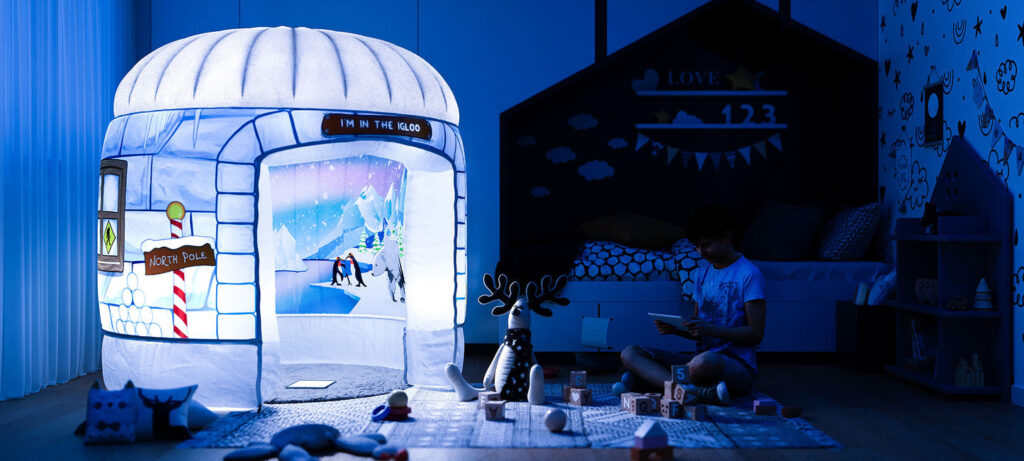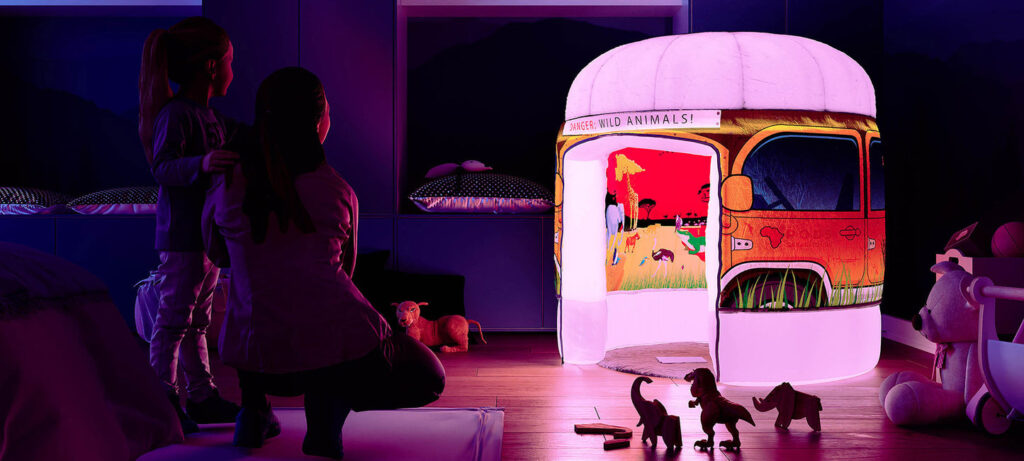In a world filled with constant stimuli, it’s not uncommon for children to become overwhelmed by their surroundings. For some, sensory processing challenges can make everyday experiences feel like a sensory overload. This is where the magic of the sensory tent comes into play. These innovative and versatile spaces offer a haven for kids, providing a controlled environment that caters to their unique sensory needs.

Understanding Sensory Needs:
Before delving into the benefits of sensory tents, it’s crucial to understand the concept of sensory processing. Many children, especially those with neurodevelopmental disorders like autism spectrum disorder (ASD) or attention deficit hyperactivity disorder (ADHD), may experience sensory processing difficulties. This means their brains have trouble organizing and making sense of the information received from their senses.
Sensory Tents as Safe Havens:
Sensory tents are designed to create a controlled and soothing environment for children who may find regular surroundings overwhelming. These portable tents offer a safe haven where kids can retreat to when they need a break from sensory stimuli. The enclosed space provides a sense of security, helping them regulate their sensory experiences and find calmness.
- Calming Sensory Stimulation: Sensory tents often come equipped with various elements designed to stimulate the senses in a controlled manner. This can include soft lighting, tactile elements like textured fabrics, and calming visuals. These features create a calming atmosphere, helping kids manage their sensory input and reducing stress.
- Privacy and Tranquility: The enclosed nature of sensory tents provides a level of privacy that can be especially beneficial for children who struggle with sensory overload in social situations. It offers a quiet and tranquil space where they can retreat to decompress, recharge, and regain a sense of control.
- Flexibility and Personalization: Sensory tents are incredibly versatile and can be adapted to suit individual preferences. Parents and caregivers can customize the tent with items that specifically cater to their child’s sensory needs. Whether it’s adding weighted blankets for deep pressure input or incorporating favorite sensory toys, the flexibility allows for a tailored sensory experience.
- Promoting Independence: Having a designated sensory space empowers children to recognize and address their sensory needs independently. Instead of feeling overwhelmed by external stimuli, they can proactively seek out their sensory tent as a self-regulation tool, fostering a sense of independence and self-awareness.

Conclusion:
In a world that can sometimes feel overwhelming, providing children with luxury tents offers a tangible solution to help them navigate their unique sensory experiences. These portable havens not only serve as retreats for moments of overwhelm but also empower children to become active participants in managing their own sensory well-being. As we continue to understand and appreciate the diverse sensory needs of children, sensory tents emerge as invaluable tools in creating a supportive and nurturing environment for every child to thrive.
















